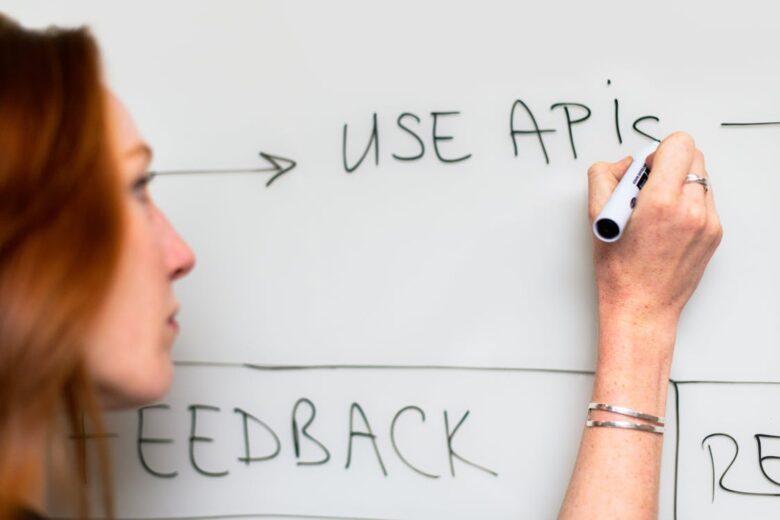Every business owner should be prepared to improve efficiency in the workplace and basically welcome any tool that could assist them in improving project accomplishment. Aligning the courses with your business can help employees increase their productivity, which would then result in higher sales and thus profits. One of such tools is a flowchart, and every project could benefit from it.
This is a graphical illustration of steps in a process. Its most common purpose is to explain how a certain process in an organization works or how it should work, without using any complicated business jargon. For entrepreneurs, it represents invaluable and easy-to-use aids and a valuable educational tool within the team.
Of course, there’s more than meets the eye when talking about them. If you’re an entrepreneur who strives to find out how to use these miraculous diagrams, below you can find some examples on how to use them efficiently and boost the productivity of your business.
1. They make you create constant improvements

Although flowcharts facilitate and improve various procedures again and again – every time – they aren’t perfect, and neither are they complete once they’re created. They’re perfect for outlining new ideas and testing whether these could be streamlined within current systems.
These aren’t always absolutely comprehensive, but even then they make desirable changes clear and visible and thus facilitate their integration. In such cases, they’re a perfect tool for proactive issue solving and they can show your progress.
2. They go with establishing training materials and best practices

One of the most valuable pieces of advice for entrepreneurs is that they should never discard flowcharts once they complete the projects. The reason for that is that they can be used not only for discovering projects’ weak spots and identifying their parts that can be improved but also as a great teaching tool for project teams within a company.
Not until long ago, entrepreneurs used to get these sheets and turn them into a great aid for outlining amazing practices from successful projects. This means they are partially compiled because of the teams’ education. Most successful entrepreneurs get out much more out of diagrams instead of their original use these days.
3. They define a work process

Illustrating visually how a single process is performed from beginning to end, usually in consecutive order, is one of the most important values of charts. A diagram with illustrated steps is often used to demonstrate whether the existing process is efficient or not.
For example, if you aren’t sure whether a specific task is worth your precious time and effort, a simple flow diagram can show you whether there are some bottlenecks or duplicated tasks. Also, you can add specific symbols to each of the steps in your chart so that each one of them represents each of your staff members responsible for each of the outputs. Only then you’ll have a clear picture of whether your team is overstretched or perhaps some of the team members are not necessary to complete the project.
4. They help evaluate the timing of tasks

Another more-than-useful purpose of charts is that they can identify and show how much time your team needs to complete each task within a project scope or during the procedure.
One of the conveniences of using them is the option of adding columns to the timing sheets in order to relate project tasks with time. This is particularly super helpful for the analysis of deadline-oriented procedures, because they indicate which tasks require more time and effort for their completion.
Bottom line, understanding how much each task needs to be completed helps entrepreneurs and project teams to boost their efficiency – and that’s where diagrams are irreplaceable. Luckily, modern times have brought super interesting software such as www.zenflowchart.com/, which make chart creation much simpler.
5. They facilitate troubleshooting and fixing problems

If you don’t know what went wrong in your workflow or at which stage of the process that happened, it’s hardly possible to fix issues and solve problems. That’s why troubleshooting is one of the crucial purposes of charts – designing a flow diagram dedicated to it is typically easy and starts with identifying the problem and writing it down in a simple box at the top of the sheet.
Those boxes are usually connected with arrows, while possible reasons for the problem you identified are stipulated in the boxes. For instance, if a problem with a client’s dissatisfaction is identified, the possible reasons for that, such as long phone queues, or their dissatisfaction with the delivery time, need to be put into separate frames.
Finally, for each of them, you can develop possible solutions. This is just a simple example of how entrepreneurs can use diagrams for troubleshooting and fixing problems – some entrepreneurs prefer to use models in which problems are stipulated based on ‘true-or-false’ statements that can also be outlined inboxes.
6. You need to keep them simple

It’s very important to focus on the simplicity of your flowcharts and keep them as concise as possible. In case you realize that your diagram is going to stretch over the whole page, it means that it should be broken into multiple smaller ones. Otherwise, it may fail to serve its purpose and convey the real message.
If you wonder how to do this, you can use the following method: try to identify the most common task sequence within the main diagram. After that, simply develop additional flow sheets that demonstrate other variations or break down major task parts into their own, individual ones. This way, you will have all the basic details shown, without overcrowding your presentation.
These were some of the fundamental pieces of advice for using flowcharts in everyday work processes or projects. Having in mind their simplicity and the fact that they don’t require many resources, their role in developing everyday tasks and improving business strategies becomes unbeatable. If you’re an entrepreneur and you still haven’t started using them to their full potential, now is the right time to start – your entire business could have a lot of benefits from them.

